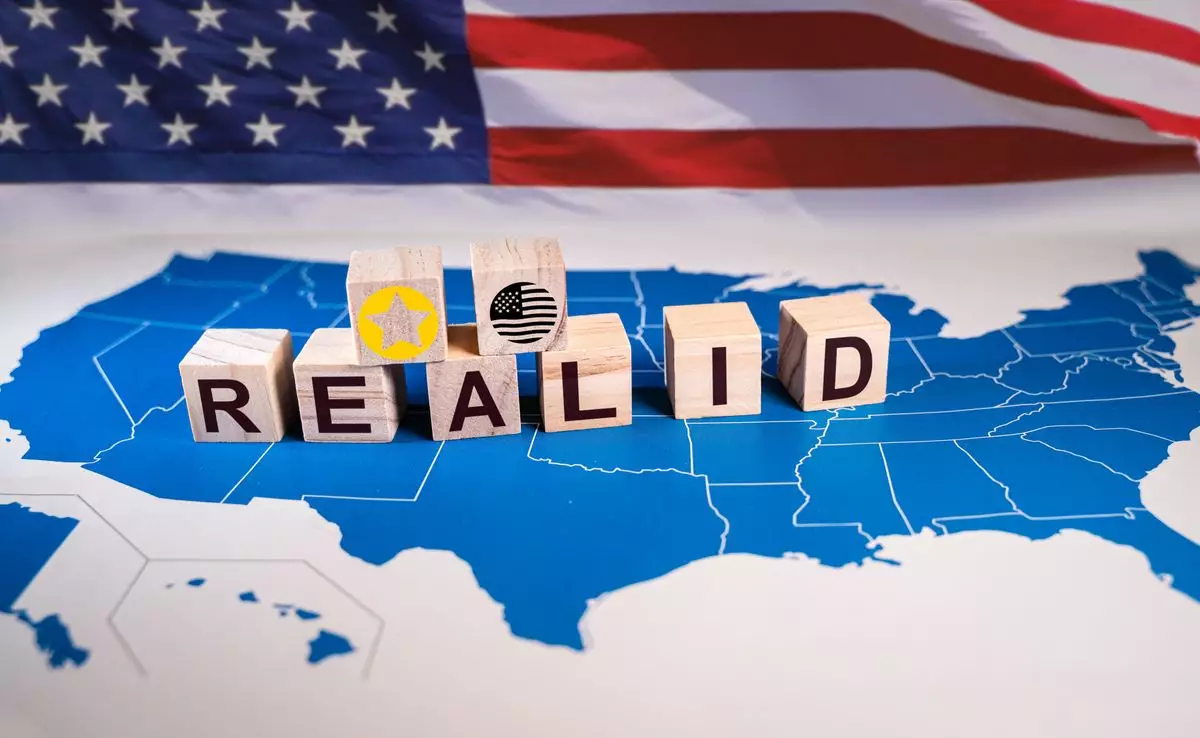The introduction of the Real ID requirement has marked a significant transformation in how air travel is conducted in the United States. The federal initiative, a recommendation born out of the 9/11 Commission’s findings, was designed to bolster security measures at airports by ensuring that travelers present more authenticated identification. The rollout, which officially commenced recently, aimed to create a seamless travel experience while enhancing safety protocols. Nevertheless, while many airports experienced a smooth transition on the first day of enforcement, some passengers found themselves facing uncertainty and confusion due to the sudden changes.
Understanding the Real ID: A Necessary Compliance
The Real ID is a stringent measure that requires travelers to carry a state-issued driver’s license or identification card that meets federal standards. Although many airports accommodated passengers without compliant IDs by allowing them to pass through security with alternate forms of identification, the clock is ticking for those still without a Real ID. The Transportation Security Administration (TSA) provided clear guidelines that informed travelers of the necessity of a compliant ID by distributing flyers at security checkpoints detailing acceptable forms of identification. This preemptive communication intent is commendable; however, reliance on flyers is insufficient to assuage the anxieties of travelers.
The implementation of the Real ID has seen high levels of demand at DMVs across the country, as many scrambled to secure their compliant identification before flight. For some, the experience was less than pleasant, with long lines and prolonged wait times becoming a common complaint. This highlights a significant flaw in the transition strategy—underestimating the demand and failing to adequately prepare for the spike in applications could have led to a more seamless experience.
Passenger Experience: At the Heart of the Matter
The concerns raised by travelers illustrate a vital truth: excellent customer service and user experience must be prioritized in bureaucratic transitions. Take, for example, the account from Michael Aceto, who described his DMV experience as a “pain in the butt,” reflecting the friction many faced when trying to secure their IDs. Such anecdotes highlight a disconnect between regulatory measures and the human experience. Is the identification deadline really an effective strategy if it alienates travelers and diminishes the joy of flying?
The travel industry, particularly airport authorities and TSA officials, should take heed of passenger sentiments during such transitions. If the new requirements lead to traveler frustration and anxiety, they can ultimately deter people from air travel altogether. Clear communication coupled with proactive solutions—like extended DMV hours and additional screening staff—would not only stem dissatisfaction but also reinforce the commitment to safety.
Managing Compliance: An Ongoing Challenge
Despite the challenges stemming from the Real ID rollout, the TSA has assured travelers that they will be allowed to fly, albeit with additional identity checks. This contradicts the very essence of the intent behind the Real ID, aiming for easier travel and security verification. Simply put, the message needs to be clearer and more focused on solutions. Creating distinct lines for those without compliant IDs should not only be a matter of necessity but should be handled with care to minimize inconvenience.
Interestingly, Secretary of Homeland Security Kristi Noem noted that approximately 81% of travelers are already in possession of Real IDs, which prompts the question—what about the remaining 19%? This significant number indicates there’s a persistent problem that can’t be overlooked, particularly as air travel continues to rebound post-pandemic. How can we ensure those without compliant IDs can move through the process with confidence and efficiency, rather than facing potential obstacles like delays?
Looking Forward: Balance Between Security and Convenience
As the travel landscape continues to evolve, the balance between security protocols and enhancing the passenger experience will remain a central debate. The Real ID initiative, while necessary for improved safety, requires a concerted effort from all involved parties, including federal entities, state authorities, and airports, to ensure that implementation does not hinder the travel experience. Beyond improving communication, effective strategies could include investing in technology and streamlining processes to make the identification and verification process as frictionless as possible.
In an age when expedience is vital for customer satisfaction, empowerment through knowledge and efficiency must shape the identity verification landscape. This raises an essential discussion about whether government bodies, tasked with enhancing security, can adapt and innovate their processes for the benefit of the public. It’s a reflection of how regulations, when poorly executed, can create unnecessary barriers that ultimately affect the industry’s future success.
Real ID represents a newfound commitment to safety, but as the travel industry pivots to accommodate this change, it’s essential that vigilance, efficiency, and awareness continue to underpin its evolution. Ensuring that safety doesn’t come at the expense of convenience should be the guiding principle as the country navigates this new travel era.


Leave a Reply